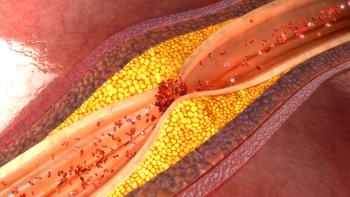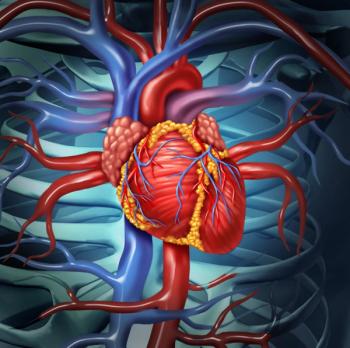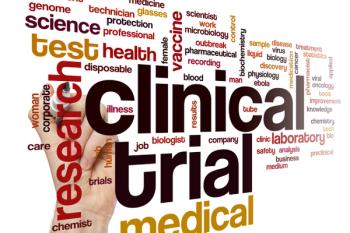
Sarcopenic obesity is a condition in which obesity is accompanied by loss of muscle mass and function; the condition is common among older adults with heart failure with preserved ejection fraction (HFpEF).

Maggie is a senior editor for The American Journal of Managed Care® (AJMC®) and produces written, video, and podcast content covering several disease states. She joined AJMC® in 2019, and has been with AJMC®’s parent company, MJH Life Sciences®, since 2014, when she started as a copy editor.
She has a BA in English from Penn State University. You can connect with Maggie on LinkedIn.

Sarcopenic obesity is a condition in which obesity is accompanied by loss of muscle mass and function; the condition is common among older adults with heart failure with preserved ejection fraction (HFpEF).

Smaller babies born to mothers living with HIV are often considered “undesirable” in sub-Saharan Africa, and the mothers themselves often are blamed for this.

The novel patient-centered performance metric was associated with readmission and mortality outcomes, as well as reclassification of hospital performance, compared with a CMS 30-day metric.

Study results demonstrate the multimillion-dollar savings achieved among patients with heart failure with reduced ejection fraction (HFrEF) following treatment initiation with sacubitril and valsartan.

A poster presented at this year’s annual meeting of the American Neurological Association demonstrates a likely greater risk of early-onset Alzheimer disease among persons living with HIV.

Heart failure with reduced ejection fraction (HFrEF) is when the heart’s left ventricle can only pump out 40% or less of the blood it contains, resulting in less oxygen-rich blood being disseminated to the body than it actually needs.

A recent review in Current Diabetes Reports delves into the utility of sodium-glucose co-transporter-2 (SGLT2) inhibitors for patients with heart failure currently on other medications.

Pediatricians and pediatric HIV specialists need to coordinate their care plans for infants born with potential perinatal exposure to the virus, according to a new report from the American Academy of Pediatrics.

Patients with heart failure should be classified as high risk in light of the coronavirus disease 2019 (COVID-19) pandemic; they are thought to be more susceptible to the virus.

A recent study of persons with HIV shows that their HIV infection was not associated with progression of subclinical atherosclerosis.

Patients with chronic heart failure and comorbid mental/behavioral disorders or diabetes had worse quality of life (QOL), according to a recent literature review.

Younger age, poverty, recent drug use, depression, and unmet need for ancillary services were linked to lowered antiretroviral therapy (ART) adherence among HIV-positive Hispanic and Latino men who have sex with men (MSM).

At the 1-year mark, following their first myocardial infarction (MI, or heart attack), heart failure hospitalizations and all-cause mortality were higher among patients who also had cardiogenic shock vs those who did not.

Antiretroviral therapy (ART) adherence and quality of life were negatively correlated with the occurrence of major depressive disorder in people living with HIV or AIDS.

Patients hospitalized for acute heart failure during the coronavirus disease 2019 (COVID-19) pandemic had more advanced disease and were more symptomatic, according to study results out of Australia.

In this study from Cape Town, South Africa, patients with comorbid HIV and a history of mental illness had an increased risk of mortality from all causes.

The results of a recent study out of South Korea show that diet management education appeared more important to health care providers than it did their patients, while both expressed the significance of medication knowledge.

Results from a study on Canadian women who did and did not participate in a population-based breast cancer screening program show that interval breast cancers are more aggressive and deadlier than screening-detected cancers.

Patients testing positive for severe acute respiratory syndrome (SARS-CoV-2), the virus that causes coronavirus disease 2019, are presenting more often with signs of heart failure with preserved ejection fraction (HFpEF).

Study results presented during the virtual European Society for Medical Oncology meeting demonstrated the superiority of cemiplimab (Libtayo) plus ipilimumab vs cemiplimab monotherapy for non–small cell lung cancer.

Minority men who have sex with other men (MSM), especially Hispanic/Latino and African American/Black men, account for most new HIV diagnoses but poor care uptake.

Over a 4-year study period, the price for 30 tablets of preexposure prophylaxis (PrEP) medication increased more than 20%, potentially keeping the medication out of the hands of those most at risk for potentially contracting HIV.

Over 12.5 years of follow-up, close to 10% of participants developed incident heart failure in a recent study that investigated possible differentiation of cardiovascular (CV) risk factors and biomarkers based on sex.

Increasing their numbers could help to improve both trial enrollment diversity and improve patient outcomes, according to research published in Circulation: Heart Failure.

Data from the EMPOWER-Lung 1 trial of cemiplimab (Libtayo) monotherapy vs chemotherapy show why the fully-human monoclonal antibody could become a new treatment option for non–small cell lung cancer (NSCLC).

Despite the known benefits of antiretroviral therapy, the treatment may prove more difficult to use among clusters of patients with HIV exhibiting resistance to certain drug classes.

Aspirin is a known anti-inflammatory agent, but few studies have investigated its use among African American women to reduce the risk of breast cancer.

Differences in heart failure mortality over the previous 2 decades can partially be explained by social determinants of health prevalent in the patients’ counties.

Because men who have sex with men continue to represent a disproportionate number of annual HIV diagnoses each year, a recent study investigated the utility of remote testing and phone delivery of test results among the patient group.

A study out of Scotland has linked levels of 2 short-chain fatty acids in female patients with early-stage breast cancer to pathological complete response (pCR) to neoadjuvant chemotherapy.

259 Prospect Plains Rd, Bldg H
Cranbury, NJ 08512
© 2025 MJH Life Sciences®
All rights reserved.
